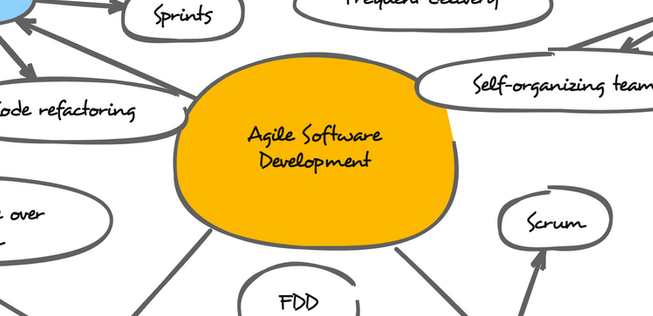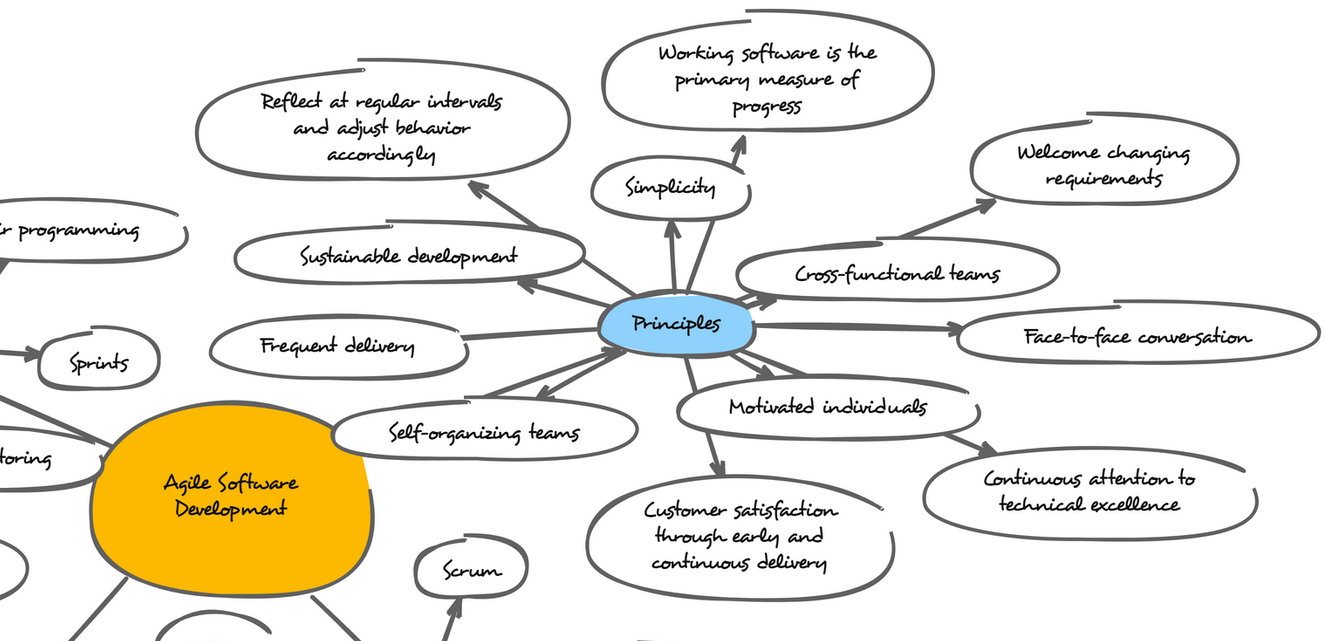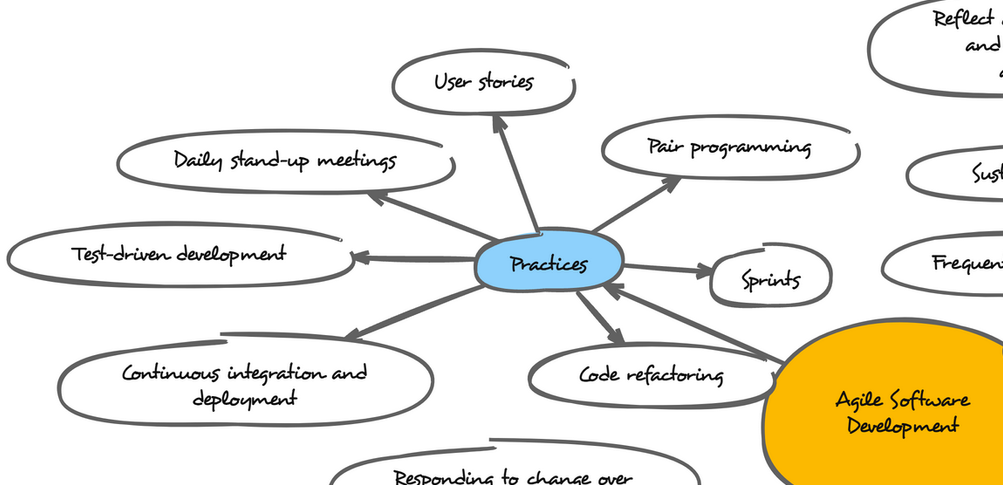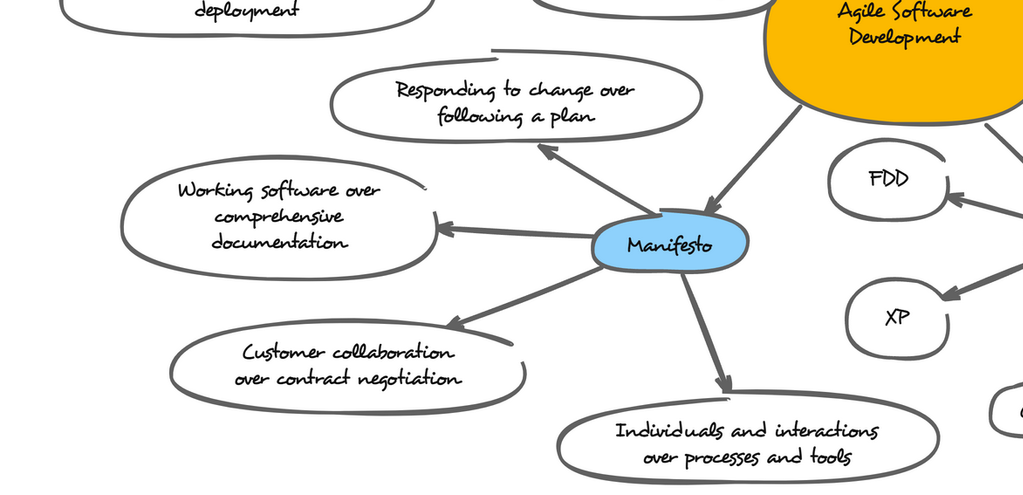Agile Software Development

The image attached depicts a flowchart illustrating the Agile software development methodology. Here’s a fictional story that incorporates the different stages of Agile software development:
What is Agile Software Development?

Imagine a company that builds mobile apps. They are developing a new app to help users find the nearest gas station. The Agile development team consists of a product owner, who represents the business side of the project, a scrum master, who keeps the project on track, and a team of developers, designers, and testers.
- User Stories: The product owner meets with the team to discuss what features the app should have. They brainstorm and write down user stories, which are short descriptions of how users will interact with the app. For example, a user story might be "As a driver, I want to find the nearest gas station on a map so that I can fill up my car."
- Welcome Changing Requirements: The team recognizes that the requirements of the app may change as they develop it. They are flexible and embrace changes throughout the development process. For instance, after developing a initial version of the app, the team gets feedback from users that they would also like to be able to see the price of gas at each station. The team incorporates this new feature into the next version of the app.
- Sprints and Frequent Delivery: The team breaks down the development process into short sprints, which are typically two to four weeks long. At the beginning of each sprint, the team selects a set of user stories to work on. At the end of the sprint, the team delivers a working version of the app that includes the features from those user stories.
- Daily Stand-up Meetings: Each day, the team holds a short stand-up meeting to discuss their progress, identify any roadblocks, and plan for the next day. This helps to keep the team on track and ensures that everyone is aware of what the others are working on.
- Pair Programming: Sometimes, two developers will work together on a task. This is called pair programming. It can help to improve the quality of the code and spread knowledge among the team members.
- Test Driven Development (TDD): The team uses a development approach called test-driven development (TDD). In TDD, they first write tests for the code they are about to write. This helps to ensure that the code works as expected.
- Continuous Integration and Deployment (CI/CD): The team uses a practice called continuous integration and deployment (CI/CD). This means that they frequently integrate their code changes into a central repository and deploy the code to a testing environment. This helps to identify and fix bugs early in the development process.
- Code Refactoring: As they develop the app, the team takes time to refactor the code. This means that they improve the structure and organization of the code without changing its functionality. This helps to make the code easier to understand and maintain.
- Reflect at Regular Intervals and Adjust Behavior Accordingly: Throughout the development process, the team reflects on their progress and identifies areas where they can improve. They then adjust their behavior accordingly. For example, if the team finds that they are spending too much time on meetings, they may decide to hold fewer meetings or shorten the length of their meetings.
- Customer Satisfaction through Early and Continuous Delivery: By delivering working versions of the app frequently, the team is able to get feedback from users early and often. This helps to ensure that the app is meeting the needs of its users.
- Working software is the primary measure of progress: The Agile Manifesto emphasizes that working software is the primary measure of progress. This means that the team is focused on delivering working features to users, rather than just writing documentation or code.
- Principles: The Agile methodology is based on a set of principles that include:
- Individuals and interactions over processes and tools
- Working software over comprehensive documentation
- Customer collaboration over contract negotiation
- Responding to change over following a plan


